-
WET DIGESTION: Biodigesters are hermetically sealed reservoirs or tanks that produce biogas and bio-fertilizers from biological waste and energy crops through wet, oxygen-free fermentation (wet anaerobic digestion). They allow the feeding of substrates (biomass) and discharge (effluent) of biofertilizer and have a biogas collection and storage system for energy use. Biodigesters take advantage of organic matter produced by animals (manure), agricultural waste, crop residues, waste from agro-industrial processes, slaughterhouses, palm oil extractors, urban waste (wastewater, organic waste), etc.
-
DRY DIGESTION: This method makes it possible to ferment organic waste with up to 50% dry matter content. The biological residues are inoculated with the substrate that has already been fermented. It is then introduced into the tank and fermented under airtight conditions. A continuous inoculation with bacterial matter is produced by means of recirculation of the percolation liquid, which is sprayed on the organic matter in the digester. During the fermentation process there is no need to mix, pump or agitate the organic matter inside the digester, nor to add additional material. Excess percolation liquid is collected in a drainage system, temporarily storing it in the percolation tank and then being sprayed back onto the new biomass. The dry method is a one-step batch process. The different stages of degradation (ie, hydrolysis, acid, and methane formation) are carried out in the same digester box. Batch process means that, during fermentation, no additional material is added or subtracted, and the biomass is left to ferment in the digester until the end of the retention time.
-
GASIFICATION: Lignocellulosic waste cannot be treated through anaerobic digestion due to its poor biological degradability, therefore, none of the above routes is recommended to take advantage of this type of biomass energetically. The best technological solution for lignocellulosic waste is gasification. This process is based on crushing or pelletizing the waste and subsequent gasification of the same. The gas obtained in this way is conducted to an Otto cycle type generator motor. On average, for every ton of wood processed through this system, up to 1Mw of energy can be obtained.
-
The biogas is used as fuel in generators for the production of electricity or in boilers for the production of heat. One m3 of biogas has a calorific value of 22,000 BTU or 6.25 kWh. One m3 of biogas used as fuel in a biogas generator can produce an estimated 2.2 kWh of electricity, depending on the CH4 (methane) content in the biogas and the efficiency of the generator. If, for example, a biodigester produces 100 m3/day of biogas, a 9.2 kW generator (almost 10 kW) can be installed to work 24 hours/day. If biogas is used to replace fossil fuels, each 100 m3 of biogas has the calorific value equivalent to 51 kg of LPG or 58 kg of bunker C.
-
What benefit do biodigesters provide?
-
Biodigesters produce energy. They reduce energy expenditure in an agro-industrial facility by producing their own energy or generate income, if this energy is commercialized.
Animal excrement (pigs, cattle, chickens, etc.) and organic waste are pollutants when they are dumped into the environment in an uncontrolled manner. The digesters transform this waste and convert it into usable by-products (resources) such as biogas and organic fertilizer.
-
Biogás production and electricity
-
All organic waste can produce biogas on a smaller or larger scale. Biogas production will depend on the content of volatile solids (organic component), the operating regime and the type of biodigester. Tropicalized biodigesters are very efficient to produce biogas. In most cases, tropicalized biodigesters reach a production of one m3 of biogas per m3 of biodigester. The following table shows some examples of the production of biogas from the most common substrates and the electrical power that can be installed using biogas as fuel.
|
Organic residue
|
(t/day) |
Biogas (m3/day) |
(KW) |
|
Pork slurry |
100 |
2500 |
229 |
|
Cow manure |
100 |
2000 |
183 |
|
Chicken manure |
100 |
15000 |
1375 |
Productions with other important substrates:
|
Kind of substrate |
Biogas (m3/tn) |
(kwhe/tn) |
|
Glycerin |
500 |
1000 |
|
Slaughterhouse waste |
300 |
600 |
|
Grease paste |
250 |
500 |
|
Dairy waste |
36 |
70 |
|
Cow manure 88% humidity |
43 |
90 |
|
Cow manure 94% humidity |
22 |
45 |
|
Pig manure 85% humidity |
62 |
130 |
|
Pig manure 94% humidity |
25 |
50 |
|
Poultry manure 75% humidity |
103 |
200 |
|
Poultry manure 60% humidity |
90 |
180 |
|
Beet pulp 77% humidity |
128 |
260 |
|
Fish scraps |
300 |
600 |
|
Vegetables Rhizocarpuos |
100 |
200 |
|
Fruits and vegetables 80% humidity |
108 |
216 |
|
Fresh grass |
185 |
370 |
|
Corn silage |
187 |
380 |
|
Cereals, flours |
538 |
1080 |
|
Potato pulp 91% humidity |
32 |
60 |
|
Fat 0% humidity |
1300 |
2600 |
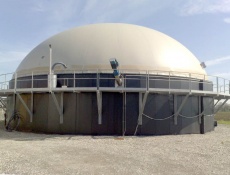 Construction of UASB and CSTR biodigesters
Construction of UASB and CSTR biodigesters 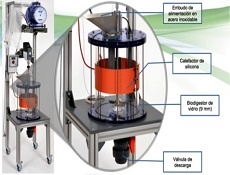 Laboratory biogas reactors available in different volumes
Laboratory biogas reactors available in different volumes 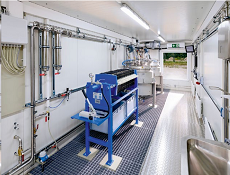 Containerized biogas pilot plants
Containerized biogas pilot plants 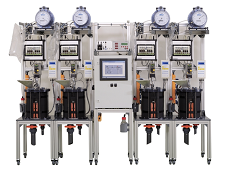 Measurement equipment for process optimization
Measurement equipment for process optimization 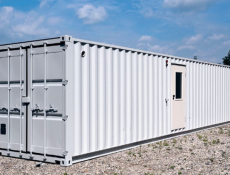 Containerized pilot plants
Containerized pilot plants 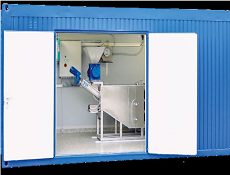 Side view of pilot plants in containers
Side view of pilot plants in containers 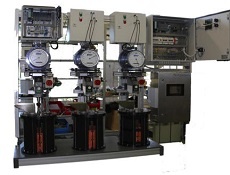 Multiple reactor laboratory equipment
Multiple reactor laboratory equipment 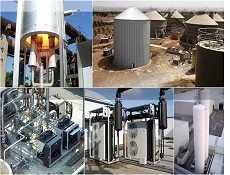 Equipment and components for biogas plants
Equipment and components for biogas plants 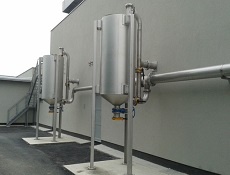 Filter system for biogas purification
Filter system for biogas purification 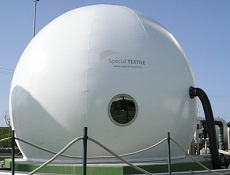 Biogas container gasometers
Biogas container gasometers 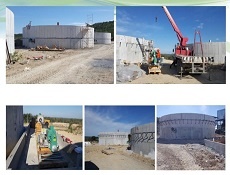 Civil works for biogas projects
Civil works for biogas projects